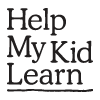What to do with this activity?
Encourage your child to do jigsaws. A jigsaw makes a great present for your child at any time of year.
Begin with an easy jigsaw. Sit down with your child and help them get started. Later they will be able to do jigsaws on their own. A good tip with all jigsaws is to start with the corners and straight-edged pieces before you fill in the middle of the jigsaw.
Make your own jigsaws - it's easy. Let your child choose a favourite picture from a magazine. Stick the picture onto light card then cut the page into largish sections. Avoid straight lines. Try and put it back together again!
Click on the yellow activity link below to find some simple online animal jigsaws. The website lets you choose how many pieces you want. Start with the easiest level first (with the picture broken into only a few pieces) and see how your child gets on. Show them how to "drag and drop".
-
Why am I doing this?
Maths is more than working with numbers. It also consists of shape and space, patterns, measuring – things you do and come across in everyday life. When children begin to learn formal maths at school, they are building on a foundation of early numeracy learning from home. Even though they may not even be aware of it, parents and children engage in numeracy activity as part of their everyday lives.
-
How can I do more?
Always teach numbers in a natural way through everyday activities and play. Count steps on a stairs, food in your shopping trolley or cows in a field. Compare things when talking big or small, long or short, older or younger and faster or slower: “You carry the small box and I’ll take the big one.” Use the words – up and down, over and under, near or far, more or less when talking to your child. Talk about the shapes of everyday things. Ask your child what shapes they can see around the room they’re in.
Rate this activity
![]()
![]()
![]()
![]()
![]()
Based on 31 reviews
How would you rate it?
1 = Poor, 5 = Great.



